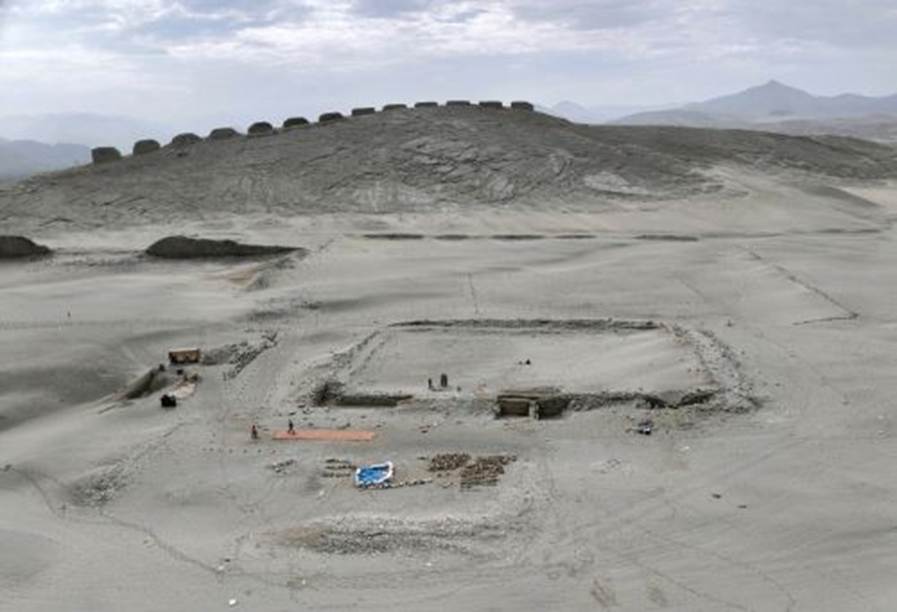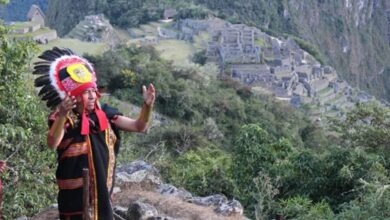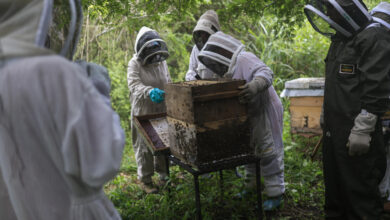Peru’s Ancient Skywatchers Rewrite Global Astronomy From A Desert Ridge

High above Peru’s coastal desert, in a landscape of wind, dust, and broken stone, archaeologists say the past has just shifted. At Chankillo, already home to the oldest known solar observatory in the Americas, they have uncovered an even older monument to the sky, pushing back the birth of Andean astronomy and quietly asking the world to rethink where science began.
An Older Eye On The Andean Sky
For years, Chankillo’s fame rested on its thirteen towers, a serrated ridge of stone in the northern region of Áncash that allowed its builders to follow the sun’s journey across the horizon with astonishing accuracy. That observatory is thought to date to around 250 BC. Now, archaeologists working there believe someone was watching the sky from this valley even earlier.
According to a statement reported by EFE, Peru’s Ministry of Culture announced that the team from Unidad Ejecutora 010, in charge of the Chankillo Archaeoastronomical Complex, has confirmed the presence of an architectural structure older than the Solar Observatory itself. This discovery redefines the origins of Andean astronomy, extending its timeline and prompting questions about how ancient societies understood the sky earlier than previously thought, which helps the audience grasp its broader significance.
The new structure is still being uncovered. Radiocarbon dating is pending so that no one will commit to a precise age just yet. But the clues are piling up. Its orientation matches the solar path. The layers of earth covering it, the way its stones were cut and fitted, all suggest a building designed to track the heavens, not simply to shelter priests or house offerings. For now, officials are careful but confident. “Its solar orientation, stratigraphy, and construction materials confirm that this is a building with an astronomical function, predating the Solar Observatory of Chankillo, considered the oldest in the hemisphere,” the ministry told EFE.
Reading The Sun And Moon In Stone
The new solar building is not the only surprise emerging from Chankillo’s dunes. As excavations advance, researchers have identified a corridor laid out with unnerving precision, aligned intentionally with the lunar cycle. In other words, the same society that carved towers for the sun also shaped passages for the moon.
According to the Ministry of Culture, this corridor shows that “both solar and lunar observations were carried out in the complex, and that astronomical knowledge was more diverse and advanced than previously known.” For decades, Chankillo was primarily famous for its solar alignments, evidence of a people who could anticipate solstices and structure their calendar around the sun’s extremes. The new findings suggest something more: a culture that understood the sky as a whole, following the rhythms of day and night, the bright disc and the pale twin, and inscribing that understanding in stone.
If you stand in the valley at dawn, with the ridgeline of Chankillo silhouetted against the light, it is not hard to imagine what those alignments meant. Each notch, each corridor, each viewing point offered a slightly different angle on the heavens. For the people who built them, the sky was not an abstract map. It was a living calendar, a way to predict rains, harvests, ceremonies, and perhaps even the right moment for war.

Warriors At The Observatory Gate
Power, the excavations suggest, lived where astronomy and war met. The Ministry of Culture recently highlighted the discovery of a large ceremonial vessel in Patazca style, nearly a meter tall, decorated with clay figures of warriors frozen in fighting stance.
The vessel’s placement suggests elites combined astronomical knowledge with military power, evoking respect for their sophisticated social hierarchy.
It is an evocative image: a narrow path up to the observatory, guarded in symbol by a pot full of clay fighters. To pass it was to move into a space controlled by those who claimed a special relationship with the sky. They were the ones who read the sun and moon, and the ones who commanded soldiers on the ground. In Chankillo, the ability to predict a solstice and the ability to lead men into battle may have belonged to the same hands.
Casma Valley’s Quiet Bid For A Place In History
Put together, the new solar structure, the lunar corridor, and the warrior vessel have changed the way Peru presents Chankillo to the world. In its statement, the Ministry of Culture said these discoveries consolidate the Casma Valley, where the complex stands, as “one of the most important ancestral astronomical centers in the world.” That is a bold claim in a country that also holds Nazca’s geoglyphs and the terraces of Machu Picchu, yet the evidence at Chankillo is quietly persuasive.
Excavation and restoration work continue at both the Solar Observatory and the famous Thirteen Towers. Walls are being stabilized, and buried structures are exposed inch by inch. The plan is to open more of the site to visitors in the coming years, once conservators are satisfied that the ancient stone can withstand modern footsteps.
When that happens, those who make the journey will walk up through the desert light to stand where Andean skywatchers once stood, between towers aligned to the sun and corridors tuned to the moon. Thanks to the patient work of archaeologists and the reports shared through EFE, we now know that when the first builders of Chankillo looked up, they were not just gazing at the stars. They were quietly inventing a science that, millennia later, would force us to redraw the map of how far back human curiosity about the sky truly extends in Peru.
Also Read: The Cat That Came Back: How Chile’s Puma Boom Is Rewriting Patagonia’s Wild Heart





